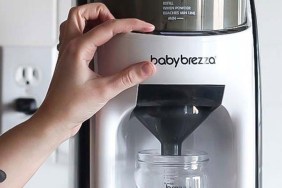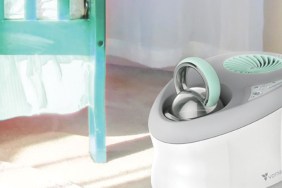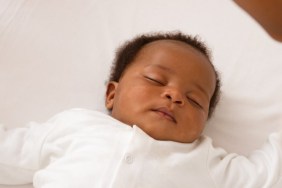Many first-time parents think they need to sanitize all items that go into their baby’s mouth every time they use them. The truth is that these days our washing machines work just fine.
That said, when I had my son I tried two things besides the washing machine. Sanitizing with a big bowl of hot water, which caused me to burn myself multiple times given my sleep-deprived state, and using Baby Brezza’s Baby Bottle Sterilizer and Dryer Machine (they have a few different sterilizers). If you have the counter space for this, it’s amazing. It’s not only quick and easy to sterilize, it dries as well without any worries of hot water or soap or using drying racks that aren’t sterile.
When I’m not sterilizing I hand wash and use OXO’s Space Saving Drying Rack. It fits all the baby-related items I’m washing on the regular, including big WubbaNubs. I got it a few weeks ago and am obsessed because besides being functional it looks far better than any alternative I’ve seen – I’m not looking for the months I spent designing my kitchen to be “ruined” with less than beautiful baby items!
Now that the background is out of the way, let’s get back to sterilizing.
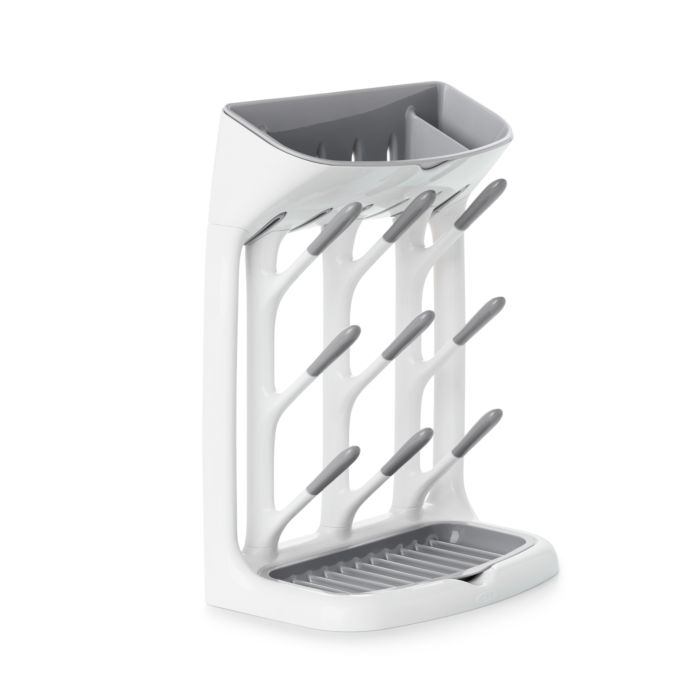
So, what exactly do you need to sterilize?
“The most common items we recommend sanitizing include baby bottles and bottle parts, breast pump parts, pacifiers, and other ‘baby accessories,'” says Dr. Jacqueline Winkelmann MD, FAAP, pediatrician and the chairman of the medical advisory board for Miku.
Dr. Winkelmann recommends feeding accessories be sanitized before first use (straight from the package) and after that, every 2-3 weeks (if in daycare, consider weekly) and after baby has been sick
The CDC came out with a recommendation to sterilize breast pump parts daily.
From the CDC:
“For extra germ removal, sanitize feeding items at least once daily. Sanitizing is particularly important when your baby is younger than 3 months, was born prematurely, or has a weakened immune system. Daily sanitizing of feeding items may not be necessary for older, healthy babies, if those items are cleaned carefully after each use.”
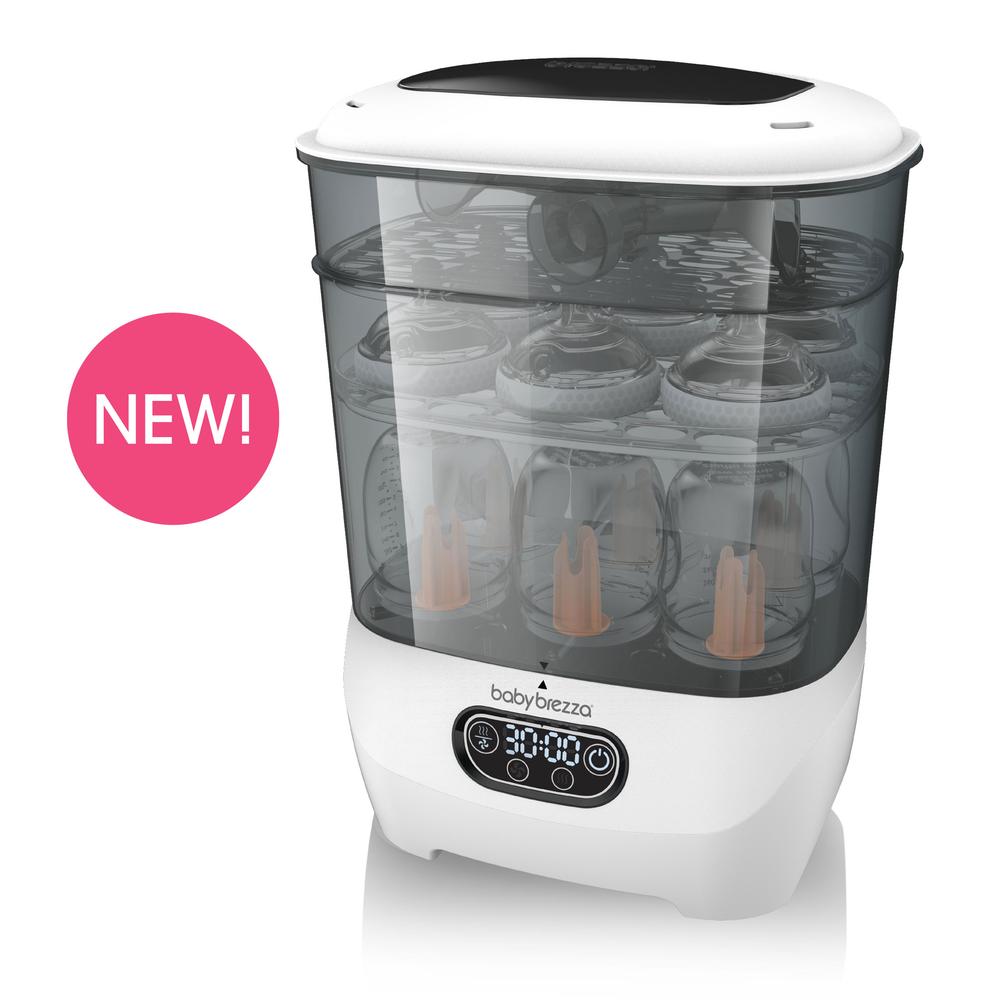
These are the most common sanitizing methods:
- Dishwasher Method
“Run the dishwasher using hot water and a heated drying cycle (or sanitizing setting). If items are not completely dry, let air dry, and do NOT use a dish towel to rub or pat items dry because doing so may transfer germs to the items. Remember, it is important your items fully dry immediately after sanitizing. This will prevent bacteria from growing in the hot, wet, environment.”
- Boil
- “Place disassembled feeding items into a pot and cover with water.
- Put the pot over heat and bring to a boil.
- Boil for 5 minutes.
- Remove items with clean tongs.”
- Steam:
“Place disassembled items in microwave or plug-in steam system and follow the manufacturer’s instructions for sanitizing, cooling, and drying the items.”
“It’s important to mention that sterilizing followed by air drying on something like a drying rack, is not ideal since it undermines sterilizing by placing the products on a non-sterilized surface. The most effective solution to avoid the risk of germ contamination during the drying step is the Baby Brezza Sterilizer Dryer Advanced. It provides the best of both worlds: it sanitizes bottles and other accessories with natural steam only (no chemicals), and then automatically dries them in approximately 8 minutes. It holds up to 8 bottles of all shapes, sizes, and brands plus 2 full pump part sets, pacifiers, and other accessories. My favorite part: items stay sterile and dry inside the machine for up to 24 hours. It can be set overnight and ready by the morning. Your dishwasher might have a “sterilizing” setting, but they take hours to run a cycle and use a lot of water.”
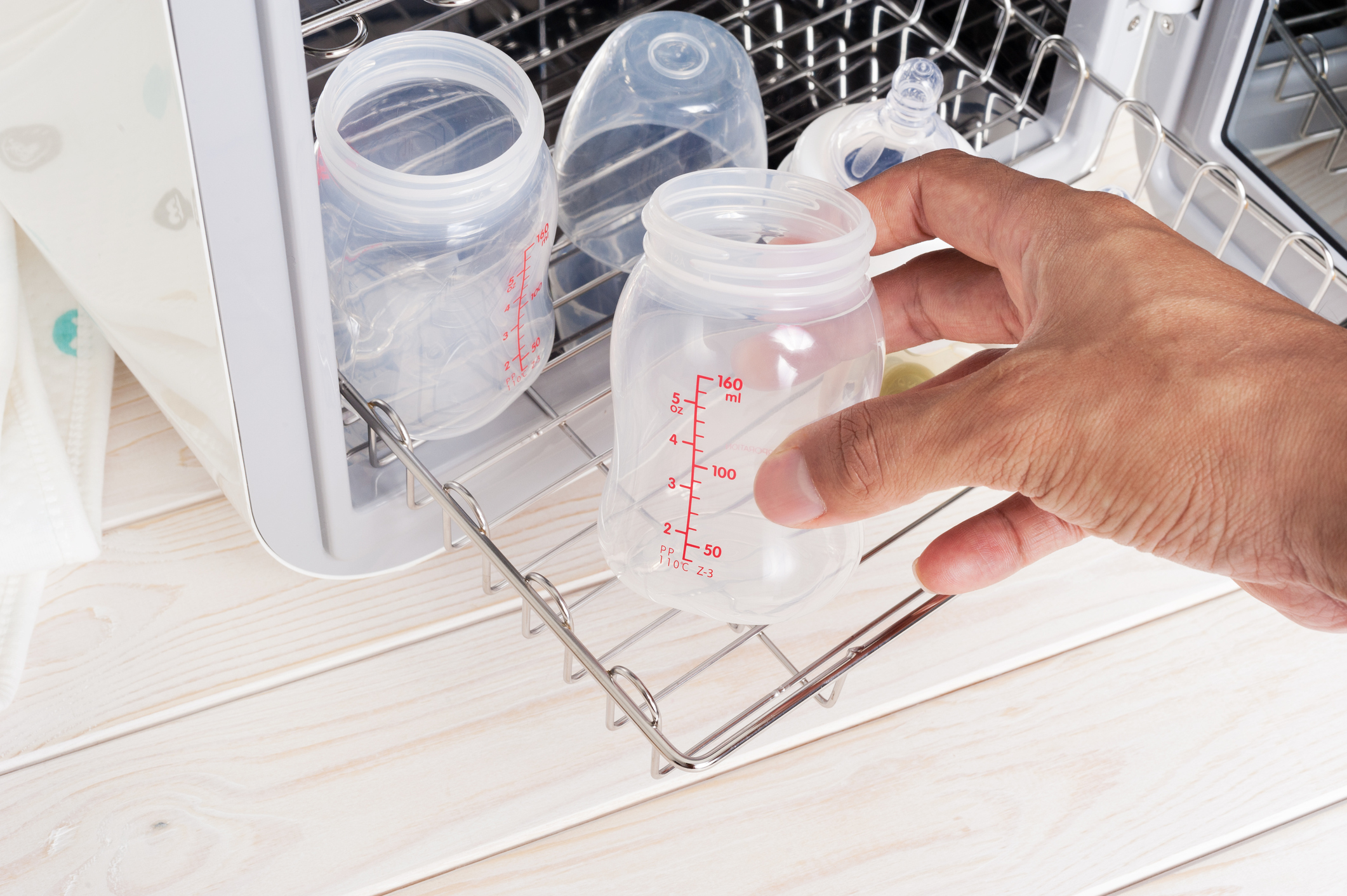
Why is sanitizing important?
“Sanitization is the process in which pathogenic microorganisms (organisms that can make you sick) are reduced in number so that they are no longer harmful; this usually means that more than 99.99% of microbes need to be removed from surfaces,” says Dr. Winkelman. “Sanitizing is an added step that can help kill more germs than traditional cleaning and works by raising temperatures to kill bacteria. This additional step in cleaning is especially important during the first few months of a baby’s life, when he/she is still developing his/her immune system. It’s also essential for premature babies and those with immune deficiencies.”
Even after sanitizing baby items Dr. Winkelmann cautions to always remember to wash your hands before handling baby bottles or feeding your baby.
There’s no official recommendation for how long to sanitize baby items, but Dr. Winkelmann says that most experts agree for at least the first 3-6 months of age when baby’s immune system is still immature, and longer if your baby was born prematurely or has an immune deficiency. Some might say if baby attends daycare sanitize a little longer, since they are exposed to more germs.





